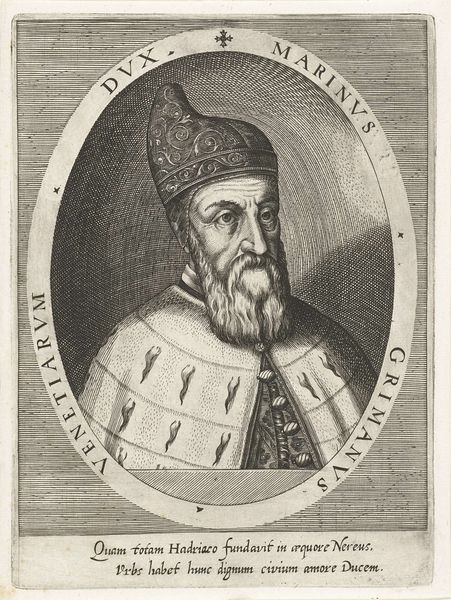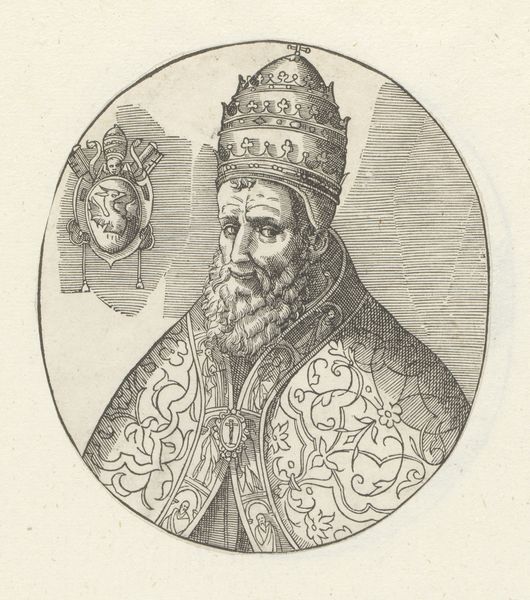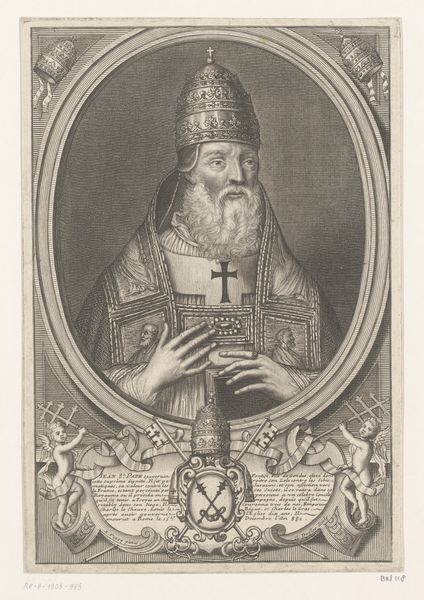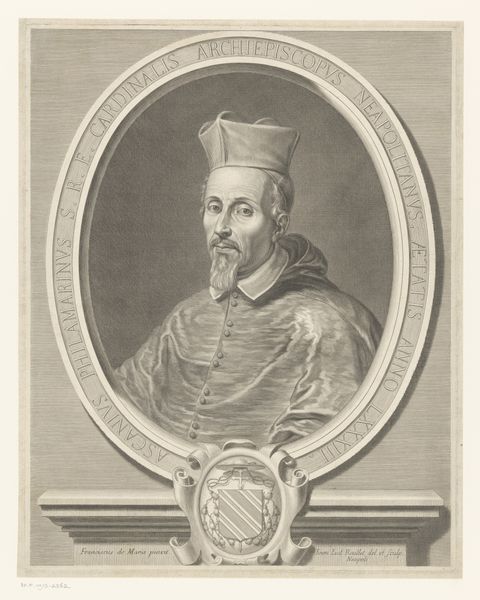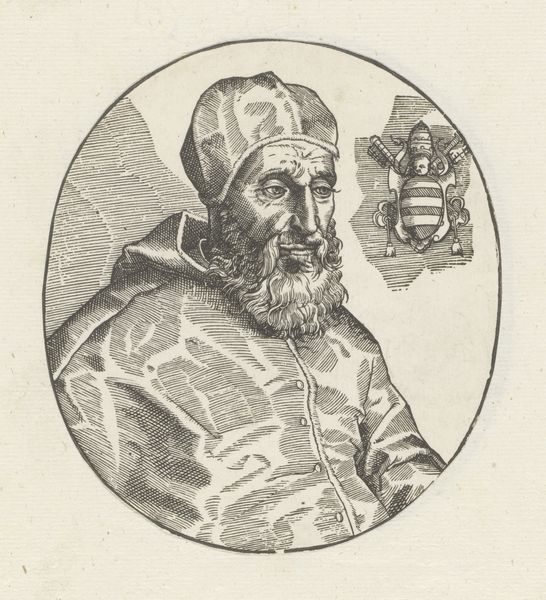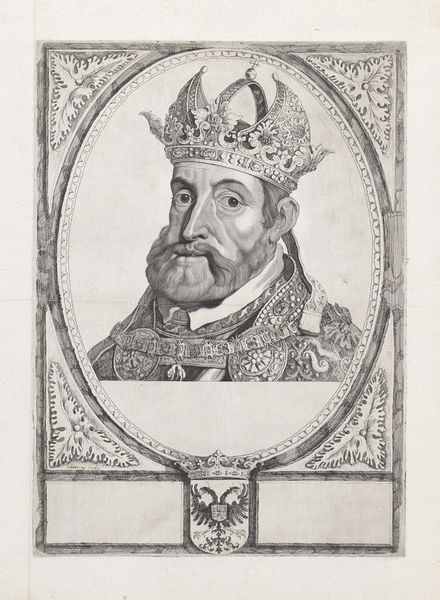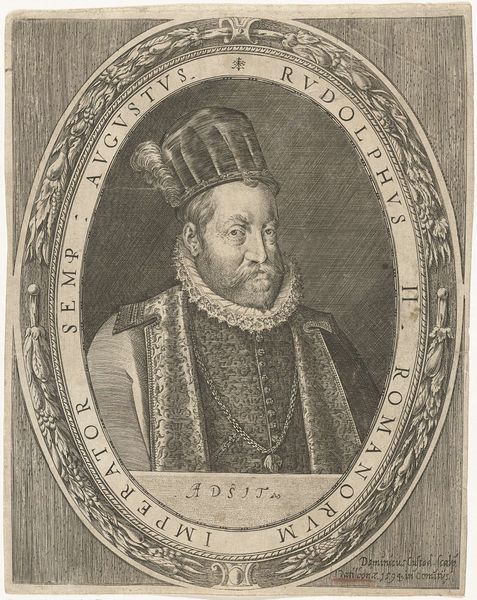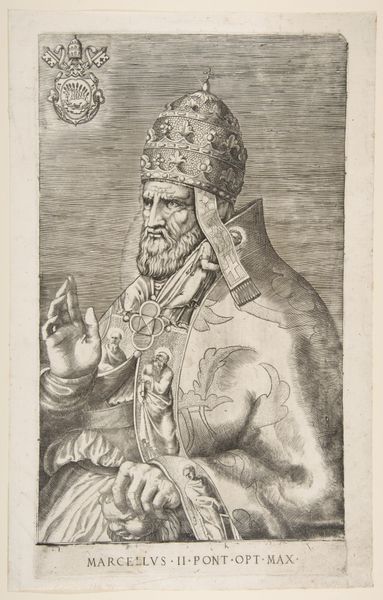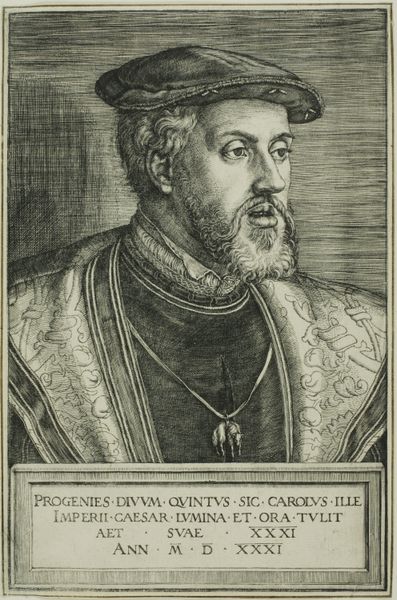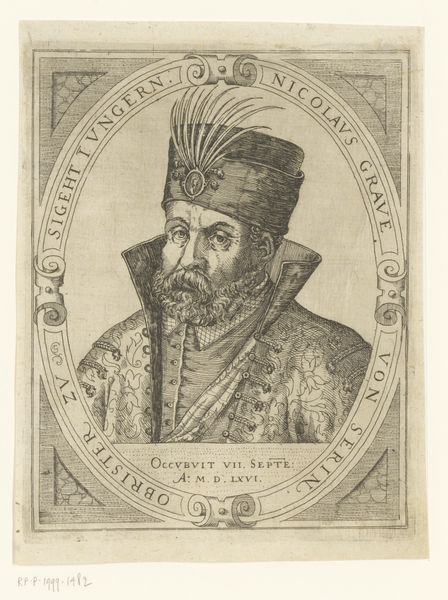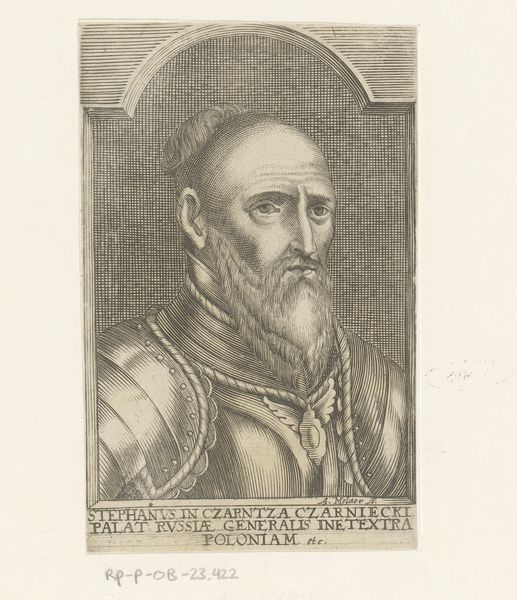
print, engraving
#
portrait
# print
#
old engraving style
#
caricature
#
11_renaissance
#
portrait reference
#
portrait drawing
#
engraving
Dimensions: height 202 mm, width 148 mm
Copyright: Rijks Museum: Open Domain
Curator: Welcome. Here we have "Portret van paus Pius IV," or "Portrait of Pope Pius IV," an engraving created between 1559 and 1562, currently held in the Rijksmuseum. It was made by Frans Huys. Editor: Whoa. Right away, this feels so… serious. Imposing, even. It's all those lines, I think. Sharp and precise. Like a topographic map of power. Curator: Precisely! The engraving medium itself lends to that impression, doesn't it? The clarity, the deliberate detail. The Pope's regalia are carefully delineated, showcasing his authority and the symbolic weight of his position. Notice how every jewel on the tiara seems to reflect divine light? Editor: I do. Though all I can think about is how heavy that hat looks. It must take some neck strength to wear all of that! And all the patterning. Even his beard is arranged symmetrically! Does it represent, like, divine order? Curator: Indeed, the symmetry and the intricate designs all point to a concept of cosmic order reflected in the church and embodied by the Pope. Everything about his presentation—from the embroidered vestments to the firm set of his jaw—communicates control and unwavering faith. The artist also subtly weaves in elements of his creation: note how the inscription circles the portrait in an elegant oval. It anchors the piece in its specific time. Editor: It feels both meticulously crafted and a bit… detached? I can admire the skill, but I don't exactly feel a connection with the man himself. Maybe that was the point? To portray the office, not the individual? Curator: That's a valid point. This era was deeply invested in the symbolic power of representation. A portrait like this served less as a personal likeness and more as an assertion of the papacy’s enduring influence and spiritual legitimacy. It's more about iconography than intimacy, in a sense. Editor: It makes you wonder, doesn't it? What he was *really* like. All those secrets locked behind the official portrait. But there is some humanity in it still, a shadow there, in his face. It's compelling. Curator: Absolutely. It shows that within the carefully constructed image, there's always room for the viewer's own interpretation, and for that continuous exploration of our shared visual memory.
Comments
No comments
Be the first to comment and join the conversation on the ultimate creative platform.
